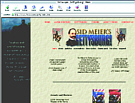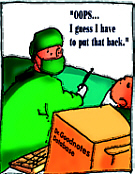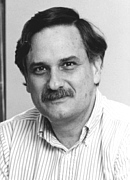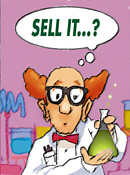
|
|
Generals for a day at
"Gettysburg"
|
|
The "game" at 1430--2:30 pm for those readers who never went
through boot camp--was a computer simulation of the battle of
Gettysburg. The occasion was a "virtual staff ride" conducted by
the
Center for Strategic Studies. The center, which is part of
the Nitze School of Advanced
International Studies (SAIS),
periodically takes its students to battlefields to give them some
idea of the situations faced by commanders. On this day, SAIS
faculty members Eliot Cohen and Andrew Bacevich were
experimenting with a popular computer war game to impart the same
lessons.
Their idea was to make a group of their students Confederate
generals at Gettysburg for a day. After a morning briefing from
"General Lee," who actually was student Tom Ehrhard, two student
"corps commanders" would in turn brief other SAIS students who
would impersonate various Confederate generals. After lunch,
those "generals" would sit before computer terminals in the SAIS
language lab and maneuver their troops in a simulation of the
actual battle. They would receive new orders from their
commanders as the afternoon wore on, and maneuver their computer
troops accordingly.
Cohen and Bacevich hoped to convey the difficulty of writing and
communicating precise orders, and to give their students some
sense of the "fog of war"--the deadly chaos and miscommunication
that bedevils military commanders and costs innumerable soldiers
their lives.
As Ehrhard studied a battlefield map in Room 812 and formulated
his plan, Stephen Guenther (the Union's General George Gordon
Meade) relaxed before a terminal in the SAIS language lab, where
the "battle" would be fought. Guenther smiled and said, "My
knowledge of Gettysburg is sketchy at best. If it's a coordinated
attack, I'm toast. I can't react fast enough."
Late in the morning, Bacevich listened as Ehrhard tried to convey
orders to his corps commanders, explaining what he wanted them to
tell their subordinates to do with their troops. The professor
spotted problems right away. "He kept repeating his strategic
concept in different words," Bacevich said. "There was enough
ambiguity that it will be interesting as the orders filter
down."
Sure enough, by 1355 things were coming unglued. In a SAIS
auditorium, the corps commanders were trying to brief their
subordinates, who had questions the corps commanders could not
answer. Vagueness began to permeate the briefing. Artillery
coordinates were missing. One of the corps commanders issued
orders for an attack; Bacevich noted that he had neglected to
give a time for that assault to commence.
By 1430, the division commanders were ensconced before terminals
in the language lab, each with his orders, a section of the
battlefield on his screen, and a group of little pixelated
computer troops to move around and put at mortal risk. Scott
Douglas, a SAIS staff member, hit the "start" command, and the
battle was on. Though not for long. "Everybody wait," Douglas
said after a few moments. "Dr. Cohen has apparently crashed his
computer." The system had to be rebooted and the game restarted
as Cohen endured a few minutes of good-natured ribbing.
After 90 minutes, things looked bad for the federal troops. The
rebels had taken strategic Culp Hill, and the Union battle line
had broken. As expected, there was considerable confusion as
division commanders tried to tell General Lee on the eighth floor
what was happening, and he tried to tell them what to do next by
sending written dispatches back and forth via couriers, who put
the building's elevators to extensive use.
By 1700, it was over and the "generals" assembled for a
debriefing. The computer tabulated 12,883 casualties on the
Confederate side, 14,757 on the Union. Cohen and Bacevich were
not much interested in determining who had won, though it was
obvious that the rebel army had carried the day. The computer
provided a replay of the game, projected on a large screen, and
the two dozen or so students watched how the whole battle had
unfolded. At one point, Bacevich pointed out a potentially
disastrous miscommunication: corps commanders had issued orders
for troop movement, but failed to give precise map coordinates.
Division commanders knew they were supposed to move, but they
didn't know how far.
The students clearly had enjoyed themselves. One of the
Confederate corps commanders had been played by Henning Vaglum, a
Norwegian. Said Vaglum after the battle, "Only in America could a
Norwegian on a student visa come to this country and become a
general in eight months."
Some time afterward, Bacevich evaluated the experiment: "Despite
some hardware problems that caused momentary frustration, we
thought that it was a success." On a subsequent staff ride to the
real battlefield, he says, participants made connections that
"showed us that the 'virtual' lessons carried over into other
experiences. We thought that that was important." --DK
|

 Battling apathy and anonymity
Battling apathy and anonymity A "staff ride" in cyberspace
A "staff ride" in cyberspace The doctor will see you--as soon as he logs
on
The doctor will see you--as soon as he logs
on No school is an island
No school is an island Success breeds success
Success breeds success Tracking language instruction
Tracking language instruction Nursing acts to keep its men
Nursing acts to keep its men Medicine sees a dip in applicants
Medicine sees a dip in applicants Grooming student entrepreneurs
Grooming student entrepreneurs Dropout prevention that works
Dropout prevention that works






